7 essential body weight training exercises
The most important complex core strength training exercises are sometimes referred to as the Big Six. If you’re training with your own weight, these exercises should look a little different.
In this article, I’ll show you why you should integrate basic exercises into your bodyweight training plan and how you can adapt them to your fitness level.
The Big Six Bodyweight Workout Core Exercises
The Big Six concept is based on research by Dr. Richard Schmidt. This was then further refined and adapted by two fitness trainers Alvin Cosgrove and Lou Schuler in their book New Lifting Rules *.
But when is the exercise the main exercise?
If it meets the following four requirements:
- It’s functional. That is, the exercise displays patterns of daily movements.
- Requires a lot of muscle mass
- You need a lot of energy to do this.
- It includes more than just joining.
The Big Six Strength Weight Training:
- Squats
- lunges
- Deadlifts
- Click
- drag
- torso rotation
Nice and nice.
Now you know which exercises (and their variations) are good for you when you’re resistance training.
But: Gym membership costs money, the trip to the studio costs the time you don’t have enough time to exercise, and the home equipment isn’t quite straight forward either. cheap.
Wouldn’t it be great if you could do all this without weight?
But is it enough to just leave the weight plates outside?
Sorry, no!
Basic Exercises in Body Weight Training
Bodyweight training uses other intensity methods instead of weight tags.
But first, let me show you 7 core strength training exercises that I also use in my training plans. These exercises weren’t just about my shit, Paul Wade uses them extensively in his book as well.
# 1 push-ups
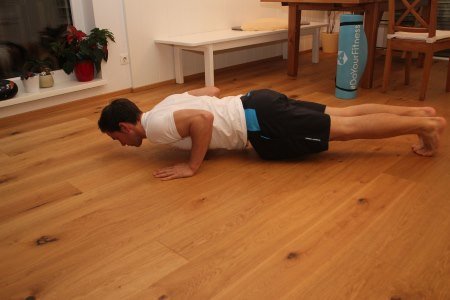
The classic among weight training. This exercise became so popular that some kind of Push Up Challenge took place around the world some time ago.
Tense muscles: You mainly use them to train the back of your forearm (triceps brachia) and pectoral muscles (pectoralis muscle). But your body’s stabilizing muscles also work at full speed when you’re in one of the push-ups.
Correct technique: Spread your arms shoulder-width apart and make sure your arms and elbows are close to your body. Then bend your arms so that your chest touches the surface of your arms. Then extend your arms again and maintain body tension.
Common mistakes: you should avoid working with impulse and spread your arms too far out. Likewise, your body should remain in line, do not stand with your upper body first.
# 2 shoulder press
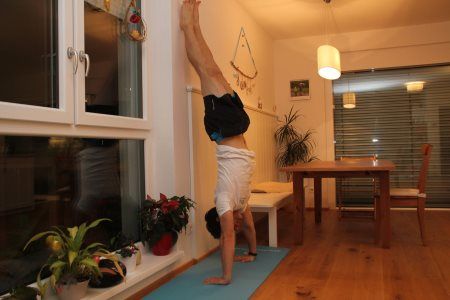
The main class of this exercise is handstand push-ups.
Tense muscles. You mainly use them to train the back of your forearm (triceps brachii) and shoulder muscles (deltoid).
Correct technique: spread your arms shoulder-width apart. Unlike push-ups, your arms can be extended away from your upper body. You don’t push as hard with your hands, but more with your shoulders. Your head should touch the surface of your arms when your arms are bent.
Common mistakes: Shifting to push-ups (make sure you work “overhead”).
chin up # 3
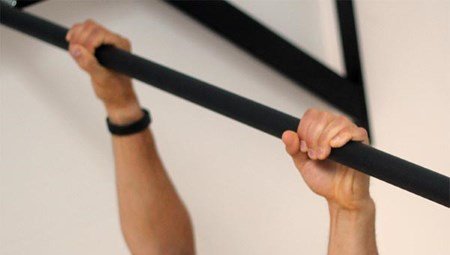
For me, proof of how much relative strength is at rest in you. The more often you can lift your own body, the higher this strength.
Tense muscles. You mainly train the front of your forearm.
Correct technique: You can do pull-ups on the pull-up bar with different grip methods. If you want to add more to your shoulders, the comb handle is the right choice. Your palms are facing you. I recommend the top handle (lifting grip) with the back of the hand facing you (you can slide your thumb like your other fingers over or around the bar) because you make your lats respond better. In any case, it is important that you use your full range of motion, that is, go down the slope (but keep your shoulders tight) and go as high as possible – at least with your head above the bar.
Common mistakes: Half reps (don’t go all the way down), leg swing. Concentrate on calm movement to counter this.
# 4 squats
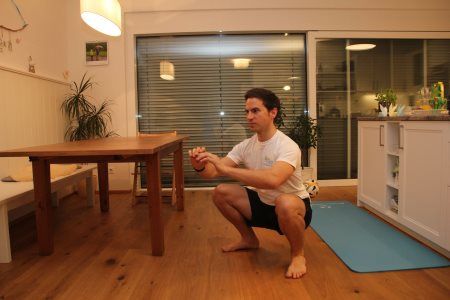
Without weight, squats can seem ridiculously easy to you. Don’t underestimate the possibilities offered by the one-legged options!
Tense Muscles: You will use it to train the front of the thigh (Quadriceps femoris), the buttocks (Gluteus maximus), the back of the thigh (the sciatic nerve muscles), and the back extensors (M. erector spinae).
Correct Technique: Stand shoulder-width apart. Your legs may be turned slightly outward. Make sure that the sole of your foot is always completely flat on the ground (imagine three points – two on your toes, one on the heel – that should remain on the ground) and bring your knees to the tips of your feet (they can also be quiet) protrude slightly above your toes) … Make sure your torso stays upright and stretched. You can use your arms as a counterweight in front of your body.
Common mistakes: You have not gone deep enough (with a half-gray squat at 90 °, with a deep squat, the thighs and lower legs touch), your legs are turned too far, the soles of your feet are not fully touching You are not squatting with a full range of motion, your position standing too wide or too narrow, knees drop inward or torso does not rise
# 5 leg lift
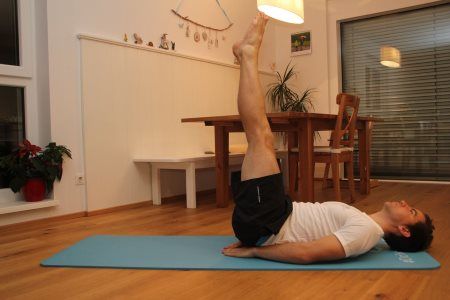
Do you want to have the right abs? Then the leg lift in its variations is the right exercise for you.
Tense muscles. You mainly train the hip flexor (M. psoas major) and abdominal muscles (especially M. rectus abdominis), as well as the front of the thigh.
Correct technique: Lie on your back on the floor and keep your feet close to each other. Raise your legs to the vertical, making sure your lower back remains in a neutral position. There should be some space underneath, but no hand can fit underneath.
Common mistakes: You support your legs with the joints of the spine (sagging / hollow back).
# 6 bridge
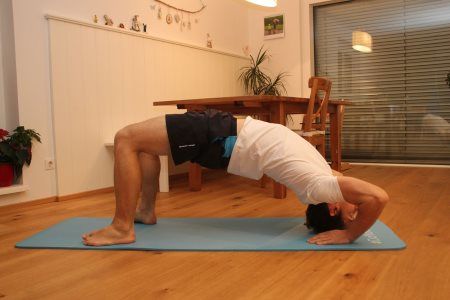
A little known exercise that can turn your back into a steel spine corset. /
Tense muscles. You mainly train your back muscles (especially M. erector spinae) and your legs and shoulders (M. Triceps brachi).
Correct technique. With a bridge, it is especially important to flex your back as much as possible. Since you do this with muscle strength, you are not afraid of injury. However, increase a little more slowly than with other exercises.
Common mistakes: Too low arch of the back (will improve over time), legs too far forward, arms too far from the head.
# 7 burpees
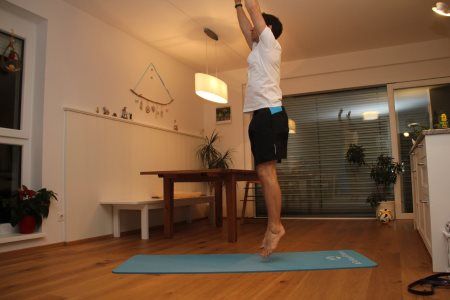
Who doesn’t know what kind of cardio exercise to do with your own weight? For me, this is the most important thing when it comes to endurance.
Tense muscles: you train your whole body with it. Since this is not a specific strength exercise, but a combination exercise, you have a greater impact on your cardiovascular system and therefore your endurance.
Correct technique: In a standing position, you squat, keeping your feet on the floor and reaching slightly in front of and behind your feet on the floor. Then you jump back, do push-ups, and jump forward again. Then you do a stretch jump and return to the starting position.
Common mistakes: the shoulders and mid-body are not tense, or you choose too difficult options for training.
Summary of Basic Exercises in Bodyweight Training
Core exercises include 6 muscle building exercises and one cardio exercise. This way, you can cover almost the entire spectrum of bodyweight training.
What else is missing is training your mobility – for me, however, there is not “one” exercise, but rather the interaction of different mobility exercises and mobility flows.
Mobility training is a three-dimensional, actively voluntarily controlled movement that increases the active ROM (range of motion). Active means using your own muscle strength, after consciously controlling those muscles, to perform the desired movement in a controlled manner. The increased ROM is created by a balance between agonist (moving muscle) and antagonist (adversary), in which the antagonist is stretched (“stretched”) in three-dimensional motion by activating the agonist, and the agonist is simultaneously enhanced.
Mobility Streams consist of several mobility exercises.
Going back to the exercises presented: in each of the exercises above, I introduced you to the classics. Sometimes this option is very difficult to implement, sometimes it is simple.
This means that in order to make good progress, you need to adapt the exercises to suit yourself.
Customize the core exercises to your fitness level
Now you know the basic exercises in bodyweight training.
But what if you can do 50 squats without a problem and want to build muscle?
Then you need to think about how to get the number of repetitions to 15. You can do this with weights in the studio, as well as using intensity techniques for your own weight exercises.
Because training to the point of muscle failure with repetitions of 6 to 15 reps is what scientific research on the subject currently finds most effective if you want to build muscle.
On the other hand, it works the same way: What if you don’t have the classic push-up yet? Then you should make the exercise easier. Simplification techniques can help here as well.
Simply put, it is a question of what options to make the exercise hard or easy:
Leverage
Since you can handle your own weight without extra weights, you must use your body correctly to make the exercises easier or more difficult. Using push-ups as an example, you make it harder when you raise your legs, you make it easier when you raise your arms or close your arms.
Range of motion (ROM)
The “Range of Motion” (ROM) should always be as large as your joint allows for bodyweight exercises. However, if you are still not strong enough for certain exercises, you can break this rule and, for example, do push-ups not to the floor, but only to half the height.
Train with speed
If you lengthen your “time under tension,” that is, the time your muscles tense, you also make the exercise harder. This means that if you usually do very fast push-ups, try doing it with 2 seconds for lowering and 2 seconds for pressing. You will find that this makes the exercise difficult.
Another possibility is negative sentences: you only slow down the phase of the eccentric (yielding) movement. To stay with the push-up example, it will be 1-2 seconds when pushing up, but 3 to 5 seconds – very slow – when moving back.
one-sidedness
The main class of weighted exercise takes place on one side of the body only. This means that the weight of your entire body, for example, is only on one arm during a push-up. This is the time when you can learn truly superhuman powers – without the extra weights.
Teaching Methods
You can simply start learning or choose learning methods that will help you achieve your goals. I recommend the latter: on my blog, I would like to present the 7 best workout methods for strength training. Check out my bodyweight ebook * and related workout plans for a few more.
Conclusions on basic exercises in bodyweight training
7 essential strength training exercises should be the backbone of your bodyweight training plan.
Make sure you tailor the exercises to your fitness level and your goals.
This way you can make fast and sustainable progress.
Which of the main exercises do you already regularly use in your workouts? What would you like to include in the future?
If you want to learn more about bodyweight training and learn how to use it optimally for your goals, take a look at my P.A.T. Body weight training. The book contains over 85 instructional videos and nine different curricula, each of which you can adapt to your goals. With the discount code “fitvolution” as a Fitvolution reader, you even get 15% off the package. Yang also named it one of the best fitness books in his guidelines.
Train fun, keep moving!
